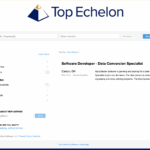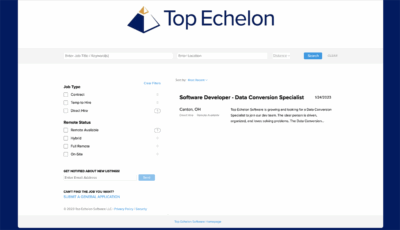Assessment and testing software is becoming increasingly popular among organizations, particularly those in the education and human resources sectors. These software tools offer an efficient and effective way to evaluate knowledge, skills, and abilities, and to measure individual and organizational performance. In this article, we will explore the benefits and key features of assessment and testing software.
Key features of assessment and testing software
Test creation: Assessment and testing software offer an intuitive and user-friendly interface for creating and designing tests. The software allows organizations to create a wide range of assessments, including multiple-choice, true-false, and essay questions. Additionally, the software offers customization options, including the ability to add images and videos to test questions.
Test administration: Assessment and testing software offer a range of options for test administration. The software can administer tests to a large number of individuals simultaneously, and can offer remote testing capabilities. Additionally, the software can track test-takers’ progress and provide real-time feedback to individuals during the testing process.
Grading and evaluation: Assessment and testing software offer automated grading and evaluation capabilities. The software can grade multiple-choice and true-false questions instantly, and can provide detailed feedback to test-takers on their performance. Additionally, the software can provide customized grading rubrics for essay questions, ensuring that grading is done consistently and objectively.
Data and analytics: Assessment and testing software offer data and analytics capabilities that provide valuable insights into individual and organizational performance. The software can generate detailed reports on test-takers’ performance, including scores, time taken to complete the test, and areas of strength and weakness. Additionally, the software can track individual and group performance over time, providing insights into areas for improvement and progress.
Security and privacy: Assessment and testing software offer robust security and privacy features to protect test-takers’ information. The software can use secure logins and passwords to ensure that only authorized individuals have access to test results. Additionally, the software can encrypt test-takers’ data to protect their privacy and confidentiality.
Integration and compatibility: Assessment and testing software can be integrated with other software and systems, allowing organizations to streamline their testing and evaluation processes.
Benefits of assessment and testing software
Efficiency and time-saving: Assessment and testing software offer an efficient and time-saving way to evaluate knowledge, skills, and abilities. Instead of manually grading papers or tests, the software automates the grading process, freeing up valuable time for educators and HR professionals. Additionally, the software can administer tests to a large number of individuals simultaneously, reducing the time and resources required for testing.
Increased accuracy and consistency: Assessment and testing software provides increased accuracy and consistency in grading and evaluation. The software can ensure that grading is done objectively and consistently, eliminating potential biases or errors that can occur with manual grading. Additionally, the software can provide detailed feedback to test-takers, helping them to identify areas of strength and weakness and to improve their performance.
Customization and flexibility: Assessment and testing software offer customization and flexibility, allowing organizations to tailor their assessments to their specific needs. The software can be used to create and administer a wide range of assessments, including multiple-choice, true-false, essay questions, and more. Additionally, the software can be customized to include branding and logos, and can be integrated with other software and systems.
Data and analytics: Assessment and testing software offer robust data and analytics capabilities, providing valuable insights into individual and organizational performance. The software can generate detailed reports on test-takers’ performance, including scores, time taken to complete the test, and areas of strength and weakness. These insights can help organizations identify areas for improvement and to develop targeted training and development programs.
Assessment and testing software best practices
Assessment and testing software can be a valuable tool for organizations looking to recruit and hire top talent. These software tools can provide insights into a candidate’s knowledge, skills, and abilities, as well as their overall fit with the organization. In this article, we will explore the best practices for using assessment and testing software to recruit and hire top talent.
Determine the appropriate assessments: The first step in using assessment and testing software to recruit and hire top talent is to determine the appropriate assessments for the job. The assessments should be aligned with the skills and competencies required for the position. For example, if the job requires strong analytical skills, an assessment that measures analytical ability would be appropriate. Additionally, it is important to ensure that the assessments are fair, valid, and reliable.
Use multiple assessments: Using multiple assessments can provide a more comprehensive view of a candidate’s abilities and suitability for the position. Different assessments can measure different skills and competencies, providing a more accurate assessment of a candidate’s overall fit with the organization. For example, using both a cognitive ability test and a personality assessment can provide a more complete picture of a candidate’s strengths and weaknesses.
Standardize the assessment process: To ensure fairness and consistency, it is important to standardize the assessment process. This includes using the same assessments for all candidates and administering the assessments in the same way. Additionally, it is important to establish clear scoring criteria and grading rubrics to ensure consistent evaluation of candidates’ performance.
Provide clear instructions to candidates: Candidates should be provided with clear instructions on how to complete the assessments. This includes information on the format of the assessments, the time allowed for completion, and any other relevant details. Clear instructions can help candidates feel more comfortable and confident during the assessment process, leading to more accurate results.
Ensure assessment security: To protect the integrity of the assessment process, it is important to ensure assessment security. This includes protecting the assessments from unauthorized access and ensuring that candidates do not have access to the assessments before they are administered. Additionally, it is important to use secure logins and passwords to protect candidate information.
Use assessments as one component of the hiring process: Assessment and testing software should be used as one component of the hiring process, alongside other methods such as interviews and reference checks. No single assessment can provide a complete picture of a candidate’s suitability for a position. Additionally, it is important to use assessments as a tool to identify areas for development and training, rather than as a way to eliminate candidates.
Provide feedback to candidates: Providing feedback to candidates on their performance can help them understand their strengths and weaknesses and identify areas for improvement. Additionally, providing feedback can help to create a positive candidate experience and enhance the organization’s reputation as an employer. Feedback should be provided in a timely and constructive manner, focusing on specific areas for improvement and providing actionable recommendations.
Ensure legal compliance: It is important to ensure that the use of assessment and testing software complies with legal requirements. This includes ensuring that the assessments do not discriminate against candidates based on protected characteristics such as race, gender, or age. Additionally, it is important to ensure that the assessments are valid and reliable and that they accurately measure the skills and competencies required for the position.
Assessment and testing software can be a valuable tool for organizations looking to recruit and hire top talent. By following best practices such as determining the appropriate assessments, using multiple assessments, standardizing the assessment process, providing clear instructions to candidates, ensuring assessment security, using assessments as one component of the hiring process, providing feedback to candidates, and ensuring legal compliance, organizations can effectively use assessment and testing software to identify and hire top talent.








